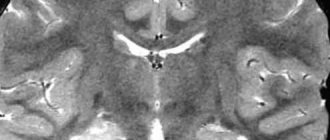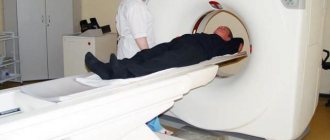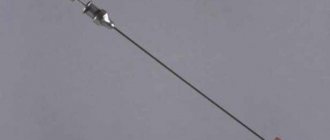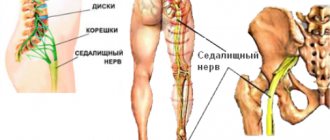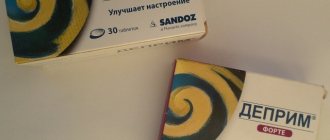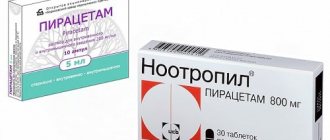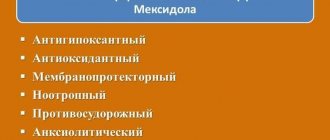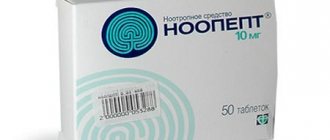Cavinton or Vinpocetine is used to improve cerebral circulation, thin the blood and prevent the formation of blood clots. These drugs relax the smooth muscles of blood vessels and expand their lumen. They are also used to prevent stroke.
Cavinton or Vinpocetine is used to improve cerebral circulation, thin the blood and prevent the formation of blood clots.
Comparative characteristics
Medications are intended to normalize memory and cerebral circulation.
Their influence is to provide antioxidant, antihypoxic, membrane-stabilizing, nootropic and anxiolytic effects. Mexidol is produced by domestic pharmaceutical companies. Cavinton is produced in Hungary.
Active ingredients
Mexidol contains ethylmethylhydroxypyridine succinate. The drug is sold in tablet and liquid form. Indicated for internal and injection administration.
Cavinton has a beneficial effect on blood viscosity, prevents platelet aggregation, and reduces cerebral vascular resistance.
The active component of Mexidol prevents lipid oxidation, a decrease in oxygen consumption and the death of part of the cellular structures of the brain. The effect of the drug is based on increasing the intensity of the accumulation of high-energy molecules. There is an activation of the production of nucleic acids in cellular structures.
The beneficial effect on the central nervous system occurs due to the normalization of nerve transmission between different parts of the brain.
The active ingredient in Cavinton is vinpocetine. This component has nootropic and metabolic properties. Improves cerebral circulation and corrects metabolic processes. It has a beneficial effect on blood viscosity, prevents platelet aggregation, and reduces cerebral vascular resistance. The medication is available in concentrate for solution and tablets.
What is better Cavinton or Mexidol?
Often there is a choice between medications. Which is better can be determined by the indications and benefits of the drugs.
Cavinton is often used for neurological diseases. This is explained by the fact that the medicine has advantages in the form of:
- Possibility of use for problems with hearing and vision;
- quickly achieve the desired effect.
But there is one drawback - it is forbidden to use it for severe heart disease.
Mexidol is characterized by a slow effect. But in some cases it is better than its counterpart. This is due to the following advantages:
- wide range of applications;
- providing anticonvulsant and anti-stress effects;
- long-term preservation of the therapeutic effect after completion of the course.
When choosing a medication, you should take into account the patient’s age and the presence of contraindications to the medications.
General information about Vinpocetine
The medication, in addition to its vasodilating properties, has the following effect on the patient’s body:
- antiaggregation;
- antihypoxic;
- antioxidant;
- improving blood flow.
Drug group, INN
Vinpocetine belongs to the pharmacological group of nootropic medications that stimulate brain functionality. The drug is classified as a psychoanaleptic. INN – Vinpocetine.
Forms of release and price of Vinpocetine
Vinpocetine is made in tablets and also in a solution for injections. The tablets are white and round in shape and have no odor with the active ingredient vinpocetine (5 mg). Tablets are packaged in blisters of 10 pieces. The box contains 1, 3, 5 blisters and instructions for using the medication
The solution for injections (concentrate for making a solution for infusion) is packaged in ampoules of 2 ml. There are 5.10 ampoules in a cardboard box, as well as an annotation for this medicine.
Average price of Vinpocetine in Russia:
| Release form of the medicine | Number of pieces in 1 package | Dosage of the main component (mg) | average cost |
| Pills | 30 | 5 | 40-80 |
| Pills | 50 | 5 | 91-101 |
| Solution in ampoules | 5 mg/ml | 5 | 50-80 |
Compound
In addition to vinpocetine, which exists in the same dosage in tablets and solution (5 mg), there are additional ingredients that differ in both dosage forms. In solution:
- ascorbic and tartaric acid;
- sorbitol;
- sodium metabisulfite;
- benzyl alcohol and water.
In tablets:
- hypromellose and magnesium stearate;
- corn starch and talc;
- silica.
The tablets also contain lactose, which must be taken into account when prescribing to patients with lactose intolerance.
Pharmacodynamics and pharmacokinetics
Vinpocetine is the main component in the medicine. It has the following effects on the brain:
- increased blood flow in the cerebral arteries;
- restoration of metabolism in brain cells (neurons);
- improving the supply of glucose and oxygen to the brain;
- improvement of the rheological properties of blood.
The principle of operation of vinpocetine is to block the cytotoxic effect of excitatory amino acids on the brain. Vinpocetine also blocks sodium and calcium channels. By supplying glucose and oxygen to the brain, the functionality of areas affected by ischemia is restored.
Also, the active component stimulates the neurotransmitter system and improves the metabolic processes of the hormones serotonin and norepinephrine. Cerebral blood flow is improved by reducing blood viscosity due to inhibition of platelet adhesion, which helps reduce the risk of intravascular thrombus formation in the cerebral arteries.
Improving blood flow in the brain contributes to the rapid recovery of cognitive functions after cerebral ischemia and stroke:
- memory is restored quickly;
- there is a gradual restoration of the functions of the speech and motor apparatus;
- the patient’s intellectual abilities are restored;
- The ability to concentrate and think returns.
Pharmacokinetics:
- absorption in the gastrointestinal tract is quite rapid;
- the maximum concentration of vinpocetine in the blood serum occurs 60 minutes after oral administration and 20-30 minutes after intravenous administration;
- binding to plasma proteins – 66%;
- bioavailability – 50-70%;
- metabolized in liver cells into the main metabolite apovincamic acid;
- half-life – 5 hours;
- excreted from the body by the kidneys with urine - 60%, and by the liver with feces - 40%;
- the medication does not have the ability to accumulate in the body;
- pharmacokinetics in different age groups of patients is the same.
Vinpocetine Acree
Unlike Vinpocetine, Vinpocetine Acree (Russian manufacturer) is available only in the form of flat tablets, with a dosage of the main component of 5 mg. The tablets are packaged in blisters of 25 pieces and 2 blisters are included in a cardboard box.
This medication has the same active ingredient as Vinpocetine, so their mechanisms of action are identical. Both medications can replace each other in therapy. However, the drug from Acri contains pyrogenic silicon dioxide, which increases the bioavailability of the drug.
Vero-Vinpocetine
The Russian-made vasodilating drug Vero-Vinpocetine is manufactured in tablet form. This is the main difference between both medications. The tablets are packaged in polymer jars of 50 pieces or in a cardboard box of 5 blisters (10 pieces per blister). The drug has a composition identical to Vinpocetine and identical purposes and contraindications.
Analogs
Analogues of this nootropic medication can be structural analogues based on vinpocetine, as well as therapeutic analogues that contain other active components and mechanism of action, but have the same therapeutic effect:
- Vinpocetine Forte Canon is a Russian structural analogue that increases the resistance of neurons to hypoxia. The medication is prescribed for cerebral ischemia of various etiologies and during the rehabilitation period after a hemorrhagic stroke. The drug is also often used to treat brain pathologies of traumatic and sclerotic origin;
- Korsavin Forte is a vasodilator that improves blood flow in ischemic areas of the brain, and also blocks platelet aggregation and increases the release of oxygen from red blood cells to the cell membranes of neurons. The drug reduces the resistance of cerebral arteries without changing systemic parameters;
- Piracetam is a therapeutic substitute for Vinpocetine, based on the active ingredient piracetam. Piracetam therapy involves filling all parts of the brain with oxygen. Piracetam is able to restore the brain in a short period of time after a transient ischemic attack, hypoxia, and ischemic stroke. Taking the medication begins in the first hours of the development of a stroke attack. Piracetam is available in tablets and solution for injections;
- Cavinton is a medicinal nootropic drug based on vinpocetine. Cavinton increases cerebral microcirculation and also improves intracellular metabolism. The medication is used to treat neurological, mental and cardiac pathologies of traumatic and vascular etiology.
What is better Cavinton or Vinpocetine in comparison?
Cavinton and vinpocetine - what's the difference? Despite the presence of one active ingredient, the drugs have differences. The main thing is the manufacturer of the medicine and the price. Vinpocetine is produced in Russia and its cost is much cheaper than its foreign analogue - Cavinton, produced in Hungary.
The drugs contain various excipients:
- vinpocetine - talc, cellulose, lactose and magnesium stearate;
- Cavinton - starch, magnesium stearate, lactose monohydrate and silicon dioxide.
There are several other small differences in dosage, indications, release form, contraindications and side effects.
Indications for the use of both drugs are insufficient blood supply to the brain in acute or chronic form, atherosclerosis of cerebral vessels. Cavinton is often prescribed after an ischemic attack or stroke, Vinpocetine - after a stroke in the acute stage or in the final phase of the disease. They are also used in cases of vascular diseases of the retina, glaucoma and macula.
Vintovochka is indicated for the treatment of tinnitus, hearing loss, Meniere's disease (a disease of the inner ear), Vinpocetine - during menopause, dizziness, age-related or toxic hearing impairment.
General contraindications for medications are:
- pregnancy;
- breastfeeding period;
- severe form of coronary heart disease;
- heart rhythm disturbances, arrhythmia;
- intolerance or hypersensitivity to vinpocetine;
- acute stage of hemorrhagic stroke.
Doctors call the side effects of Vinpocetine and Cavinton a decrease in blood pressure and tachycardia (increased heart rate). Cavinton is capable of causing:
- heartburn, nausea;
- heavy sweating;
- increased fatigue and weakness;
- allergic skin reaction;
- dizziness and headaches;
- dry mouth;
- sleep problems;
- phlebitis (chronic disease of the venous walls).
Please note that Vinpocetine is an inexpensive Russian drug, so the number of side effects reported by pharmacists is relatively small, which is a consequence of insufficient scientific research on the drug. .
Cavinton and Vinpocetine: which is better?
Cavinton or Vinpocetine is used in therapy aimed at improving cerebral circulation, thinning the blood and preventing the formation of blood clots.
These agents provide relaxation of the smooth muscle layer of the vascular wall, which helps to increase the internal lumen. Medicines are used as prophylactic agents to prevent the development of stroke.
Similarities between the compositions of Cavinton and Vinpocetine
These medicines are very similar to each other, which is due to the presence of the same active ingredient in both medicines, which is vinpocetine.
Both drugs belong to the group of pharmacological agents that provide correction of cerebral circulatory disorders.
The mechanism of action of these drugs improves blood circulation in the vessels of the brain and the rheological properties of blood. The neuroprotective effect of the drugs is due to the ability to block calcium and sodium receptors.
The active component of drugs stimulates metabolic processes in brain tissue by increasing the ability of cells to capture and consume glucose.
Cavinton and Vinpocetine belong to the group of pharmacological agents that provide correction of cerebral circulatory disorders.
The active compound of medications increases the resistance of cells to oxygen deficiency; this effect is achieved by increasing the transport of glucose, which is the only source of energy for the cell.
The drugs activate the exchange of serotonin and norepinephrine in brain cells and have a pronounced antioxidant effect.
Medicines provide:
- improvement of microcirculation in the brain;
- decreased blood viscosity;
- an increase in the degree of deformation of red blood cells, which is an important factor preventing the formation of blood clots during the development of thrombosis, which is a complication of varicose veins;
- inhibition of the process of adenosine reuptake;
- transfer of oxygen to cells and tissues;
- decrease in cerebral vascular resistance.
The active component of both pharmaceuticals is rapidly absorbed after oral administration. The maximum concentration of vinpocetine is reached within 1 hour after administration. The active component does not undergo breakdown in the stomach, which determines its high bioavailability. The degree of binding to plasma proteins is about 65%.
The presence of almost identical composition in both medications allows them to be interchanged during drug therapy.
Both drugs are recommended for use when:
- disruption of circulatory processes in brain tissue;
- development of vertebrobasilar insufficiency;
- receiving a traumatic brain injury;
- encephalopathy that occurs after injury or as a result of prolonged exposure to high blood pressure;
- motor function disorders;
- the occurrence of vascular insufficiency;
- spasm of blood vessels providing blood supply to the brain;
- partial blockage of arteries as a result of the development of thrombosis;
- the occurrence of frequent headaches and a feeling of dizziness;
- memory disorders of various origins;
- changes in the retina and choroid of the organs of vision as a result of disturbances in circulatory processes;
- thrombosis of arterial and venous vessels of the organs of vision;
- damage to the macula;
- hearing impairment resulting from age-related changes or under the influence of toxic compounds;
- Meniere's syndrome;
- cochleovestibular neuritis;
- feeling of constant ringing in the ears;
- vasovegetative disorders.
Cavinton is recommended for use when circulatory processes in the brain tissue are disrupted.
Contraindications to the use of the products are:
- Acute hemorrhagic stroke, arrhythmias or ischemic heart disease.
- Allergy to drug components.
- Gestation period and lactation.
- Age less than 18 years.
When prescribing drugs, one should take into account the possible occurrence of side effects and unwanted reactions in the patient, which may include:
- increased heart rate;
- change in blood pressure;
- ECG changes;
- tides;
- feeling of dizziness, insomnia, headaches;
- feeling of nausea, dry mouth, heartburn;
- feeling of weakness, allergies, increased sweating.
With an overdose of medications, an increase in unwanted reactions and side effects is observed.
What is the difference between Cavinton and Vinpocetine?
The main difference between medications is the manufacturer. Cavinton is produced in Hungary, and Vinpocetine is a product of the domestic pharmaceutical industry. Vinpocetine has a lower cost compared to Cavinton.
In some cases, Cavinton contains auxiliary components different from those used in the manufacture of Vinpocetine. These minor differences do not affect the effectiveness of the products or the method of application.
Vinpocetine is a generic version of a Hungarian drug and is positioned as a high-quality domestically produced drug.
Another difference is that Cavinton’s instructions for use contain a greater number of side effects compared to the generic, but if taken correctly and not exceeding the recommended dosage, the risk of unwanted reactions is minimized.
Vinpocetine is a generic version of a Hungarian medicine and is positioned as a high-quality domestic drug.
Price
The cost of Vinpocetine in tablets is 130-210 rubles. depending on the manufacturer. The price of the drug in the form of an injection solution is about 65 rubles.
The price of Cavinton in ampoules is 240 rubles per package containing 10 ampoules. The tablet form of the medicine can be purchased for 220 rubles per package containing 50 tablets
What's better?
Vinpocetine and Cavinton are similar drugs that normalize cerebral circulation. The active component of the products is vinpocetine, a substance that has a complex effect on the body.
The active component ensures the normalization of cerebral blood flow and metabolism in brain tissue. The active component provides blood thinning and reduces the degree of blood clotting, which is an important factor in preventing the formation of blood clots.
Both drugs have the following effects on the body:
- vasodilator;
- neuroprotective;
- antiaggregation;
- antihypoxic.
These drugs are so similar in indications for use, side effects and contraindications, that only the attending physician can determine the optimal choice, taking into account the physiological characteristics of the patient’s body.
Reviews from doctors about Cavinton and Vinpocetine
Nikolay, 54 years old, neurologist, Moscow
Vinpocetine and Cavinton normalize the functioning of the vascular system of the brain and improve metabolism in brain tissue cells. Medicines are prescribed for the treatment of complications of stroke, chronic cerebral circulatory disorders, encephalopathy, and vertebrobasilar insufficiency. Side effects include worsening heart rate and lowering blood pressure.
The presence of side effects requires taking into account the individual characteristics of patients when prescribing medications; caution should be exercised when prescribing medications to elderly patients. Ampoules for injections contain sorbitol, which must be taken into account when conducting a course of drug therapy in patients with diabetes. The drug is always available in pharmacies.
Sergey, 39 years old, neurologist, Arkhangelsk
Vinpocetine is an inexpensive, domestically produced drug. Available in all pharmacies. Many patients tolerate it well and ask to prescribe it themselves. The disadvantage is that the quality of the drug is unstable. For this reason, I recommend that patients purchase Cavinton.
Alexey, 50 years old, psychotherapist, Voronezh
The advantages of Vinpocetine are price, effectiveness and efficiency.
The drug has a bitter taste, can increase stomach pain due to gastritis, can cause attacks of nausea and shortness of breath due to increased heart rate; this effect from taking the drug requires caution when carrying out drug therapy with both Vinpocetine and Cavinton.
Both drugs improve blood circulation and brain metabolism with vasodilating, antihypoxic and antiplatelet effects.
Stanislav, 51 years old, psychiatrist, Krasnodar
Vinpocetine is well tolerated; it is available in injection and tablet forms, which allows for step-by-step therapy and alternating dosage forms. There are few side effects.
The effect is approximately 2 times weaker compared to Cavinton. Good for non-severe cases in patients.
Patient reviews
Elena, 68 years old, Krasnodar
3 cervical vertebrae are flattened like pancakes, and all the problems are caused by them.
From the age of 12 I had headaches, when I became a mother, migraine pains began, and now I’m 68 years old, and I tried everything they couldn’t prescribe, I tried everything, I often took Cavinton droppers, and then I took pills, I was tormented by tinnitus, insomnia, attacks of dizziness, after After the last treatment, I realized that Vinpocetine helps better than Cavinton. I buy Vinpocetine forte, and my problems have become much less.
Marina. 28 years old, Stavropol
I spent the entire summer with dizziness and severe headaches. There was no longer any strength to endure. I didn’t want to see doctors. But one pharmacist advised me to try Vinpocetine. Initially I didn’t feel any results.
But then I noticed that after taking the pill my head didn’t feel so dizzy. I started taking it regularly. The headache did not go away, but at least there was no such severe dizziness, blood and oxygen began to flow better to the brain.
Ekaterina, 33 years old, Lipetsk
The following symptom appeared: if you suddenly wake up at night, you hear a strong tinnitus. After contacting a neurologist, Vinpocetine was prescribed; the cause of tinnitus was a disruption of blood circulation in the brain tissue.
The doctor explained that it would be effective at the initial stage of the disease, and prescribed it for a long course. After 6 weeks, improvement began to be observed.
Now I don’t hear tinnitus, I take Vinpocetine 2 times a year as a preventative measure.
Oksana, 46 years old, Moscow
As a person suffering from vegetative-vascular dystonia, I have tried many medications and I want to share my experience. Before I met Vinpocetine, I took Cavinton, I thought that it treated better, because it was more expensive and treated better.
It turned out that Vinpocetine is our good domestic medicine for vascular diseases.
I try to take it in a course 2 times a year in spring and autumn, it perfectly relieves headaches, attacks of dizziness, feelings of heat in the face, and relieves nervousness.
Source: https://hi-blog.ru/veny/kavinton-ili-vinpotsetin
Release forms and dosage
Medicines are available in the form of flat tablets of white or almost white color (with a yellowish coating). The difference lies in the content of the active substance in the drug: in Cavinton it is 10 mg, in Vinpocetine it is 5 mg. There is another form of release: ampoules with colorless or slightly colored liquid for injection.
The drugs are taken orally after meals. The maximum daily dose of vinpocetine for a patient is 30 mg, the initial dose per day is 15 mg. Depending on the severity of the disease, the doctor may prescribe 5-10 mg 3 times a day. For injection, a single dose of the substance is 20 mg; treatment is usually prescribed in the acute stage of the disease.
The full therapeutic effect is achieved no less than 3 months after taking the medicine, the first positive changes occur approximately a week after the start of treatment.
Instructions for Vinpocetine tablets
Vinpocetine tablets are practically no different in pharmacodynamics from other drug formats. In terms of pharmacokinetics, it is worth highlighting rapid absorption from the gastrointestinal tract and easy permeability through tissues and histohematic barriers.
Instructions for use of Vinpocetine tablets are characterized by a gradual increase in dosage. The first two days, 20 mg at a time, up to a dose that is similar to the patient’s weight. The course lasts one and a half to two weeks, the dose should be increased gradually. Please note that Vinpocetine 5 or 10 mg tablet is not taken alone. The tablet must be dissolved in physiological solution, up to 1 liter in volume. The instructions for the tablets suggest replacing this liquid with a 5% glucose solution.
Indications and contraindications
For each of these drugs, indications and contraindications for treatment are clearly stated in the instructions for use. Cavinton is widely used in clinical practice. The main indications for its use are:
- Chronic post-stroke conditions.
- Hypertensive encephalopathy and chronic cerebral ischemia.
- Neurological and mental disorders in patients with cerebrovascular insufficiency.
- Vertebrobasilar insufficiency, vegetative-vascular dystonia.
- Vasovegetative symptoms during menopause.
- Vascular eye diseases, including glaucoma.
- Toxic or organic hearing loss, senile hearing loss.
- Meniere's disease.
Contraindications – individual intolerance, pregnancy and breastfeeding
The drug, especially parenterally, should be used with caution and in a minimal dose for severe coronary artery disease and severe cardiac arrhythmias.
The second drug, Mexidol, has pronounced positive effects in the treatment of patients with various forms of cerebrovascular disorders:
- Parkinson's disease.
- Multiple sclerosis.
- Chronic post-stroke condition.
- Encephalopathies caused by trauma, decreased blood flow, and inflammation.
- Neurocirculatory dystonia of hyperkinetic or hypokinetic types.
- Decreased cognitive properties: memory, thinking, attention.
- Glaucoma.
Contraindications to the use of Mexidol are as follows:
- Pregnancy and lactation.
- Allergic reactions to the components of the drug.
- Terminal renal or liver dysfunction.
Both drugs are contraindicated in childhood and are used only from 18 years of age.
Contraindications
The drugs are contraindicated for:
- individual hypersensitivity to components;
- acute phase of hemorrhagic apoplexy;
- severe coronary heart disease;
- pronounced arrhythmias;
- the patient is under 18 years of age (due to insufficient information about the safety of vinpocetine).
Since the active substance of the drugs penetrates the placental barrier into the body of the embryo, their use during pregnancy is not allowed. High doses of drugs lead to spontaneous abortion.
Vinpocetine also passes into breast milk, so the use of the drug is contraindicated during breastfeeding.
How to use Cavinton tablets correctly and what is the dosage of Cavinton
For prescription products, there are only recommended dosages to treat diseases with typical symptoms.
In each specific case, the doctor prescribes a specific dosage for a specific patient. In the case of Cavinton, only a doctor can prescribe this drug and the required amount of the drug. The dosages presented below are recommended volumes, but not specific to your case! For adults, Cavinton is prescribed in the following dosages: if Cavinton tablets are prescribed, the daily dose will be 15-30 mg of the drug, that is, 5-10 mg of Cavinton, taken three times a day. If you need to take 10 mg of the drug at a time, then you can take Cavinton Forte - one tablet contains 10 mg of the active substance. During the day you should not take more than 30 mg of Cavinton. The duration of treatment can vary from one to three months.
Dosage forms of the drug
The drug is available in several popular forms:
- Vinpocetine: tablets 5 mg, solution 5 mg per 2 ml;
- Vinpocetine FORTE, tablets 10 mg;
- Vinpocetine-AKOS, tablets 5 mg, solution 5 mg per 2 ml;
- Vinpocetine ACRI, tablets 5 mg;
- Vinopocetik FARMAK, tablets 5 mg, solution 5 mg per 2 ml;
- Vinopocetine-SAR – tablets 5 mg, solution 5 mg per 2 ml;
- Vinopocetine-OBL, tablets 5 mg;
- Vinopocetine-ESKOM, injection solution 5 mg per 2 ml.
Naturally, the main active components in all forms of release of the drug are the same - vinopocetine and Vinca minor alkaloids. Accordingly, they all belong to the same pharmacological group - cerebral circulation correctors.
These forms of the drug are actively used in neurology (for various diseases associated with cerebrovascular insufficiency), ophthalmology (for diseases of the choroid), to increase hearing acuity.
However, there are certain differences between the release forms:
- volumes (concentration of active substance);
- composition (excipients) that affect the activity of the main components of the drug;
- accordingly, the spectrum of action.
Vinpocetine: 5 mg tablets, 5 mg solution per 2 ml
In addition to the substance vinpocetine, it contains piracetam , a component that improves the course of cognitive processes in the brain, improves memory, increases the speed of thinking and mental performance.
Piracetam activates the propagation of impulses in the brainstem, metabolism in nerve cells, and helps improve microcirculation.
Vinpocetine FORTE, tablets 10 mg
Excipients of the drug: disubstituted calcium phosphate, lactose, crospovidone, magnesium stearate, povidone.
Crospovidone and povidone accelerate the absorption of the drug, so the main components of Vinpocetine will have a stronger effect on the body than when taking other forms.
Based on the instructions for use for Vinpocetine Forte, it is clear that this form of the drug will be contraindicated for people suffering from arrhythmia, increased intracranial pressure and those who have recently suffered a cerebral stroke.
Lactose improves aerobic metabolism in brain cells.
Vinpocetine-AKOS, tablets 5 mg, solution 5 mg per 2 ml
The solution contains piracetam in a volume of 80 mg. Excipients: tartaric and ascorbic acids, benzyl alcohol, sorbitol.
Due to its inclusion in the composition of acids, the drug is actively used in recovery from various forms of diseases associated with insufficient cerebral circulation, and it strengthens the vascular system well.
Tablets, auxiliary components: lactose, potato starch, stearate, magnesium carbonate. The latter substance improves the absorption of the drug .
Vinpocetine ACRI, tablets 5 mg
In addition to magnesium stearate, which enhances absorption, this form of the drug contains aerosil, which has a similar property. Based on the instructions for use of Vinpocetine ACRI, the bioavailability of the drug is even higher .
Vinopocetik FARMAK, tablets 5 mg, solution 5 mg per 2 ml
The excipients include glycine, which has the following effects: normalizes impulse exchanges in the central nervous system, removes toxins, eliminates depressive states, weakens mental and neurotic symptoms in cerebrovascular pathology.
That is, the FARMAK form of the drug has a wider spectrum of action .
Disodium, which is part of the diet, has a pronounced antitoxic property, which has a positive effect on the general condition when the body is damaged by strong medications or other means.
Article on the topic: Duphaston when planning pregnancy - indications and dosage regimen, dosage, side effects and price
Vinopocetine-SAR – tablets 5 mg, solution 5 mg per 2 ml.
This form of the drug also additionally contains piracetam (see “Vinopocetine”).
Other acids are ascorbic and succinic. Ascorbic acid increases vascular tone and improves microcirculation.
Succinic acid helps eliminate headaches , dizziness, helps with partial occlusion of arteries, and eliminates the vasovegetative symptoms of climatic syndrome.
Vinopocetine-ESKOM, injection solution 5 mg per 2 ml
Thanks to tartaric acid, consumption of the drug improves oxygen exchange in brain tissue. Therefore, the ESKOM form can effectively cope with headaches , dizziness, and memory impairment.
Sorbitol helps saturate brain cells with glucose.
Some forms of the drug contain acids, which additionally strengthen blood vessels, improve cellular respiration, and, accordingly, eliminate headaches, dizziness, and normalize the condition of blood vessels.
Some release forms contain components that increase the absorption of the drug (bioavailability).
Vinpocetine
The drug increases blood circulation in brain cells , thins the blood, promotes vasodilation, and lowers blood pressure.
Strengthens the totality of chemical transformations of nutrients and energy substances after their absorption from the digestive organs and before the release of active serotonin, norepinephrine, increases the absorption and excretion of glucose. Helps improve the functioning of the cardiovascular system.
The maximum concentration of the component is achieved after an hour in the blood and after 3 hours in the organs. Half-life occurs in urine after 5 hours.
In some countries, Vinpocetine is not recognized as a medicine and is sold under the guise of a biological supplement.
This medication is often used by athletes and bodybuilders, especially in complex treatment before training, as it improves blood flow and provides nutrition to skeletal muscles.
List of diseases and pathologies for which the drug is prescribed:
- Various types of cerebrovascular pathology.
- Dizziness of labyrinthine origin, neuritis.
- Senile hearing loss of the sensorineural type.
- Diseases of the inner ear, tinnitus.
- Atherosclerosis of cerebral vessels.
- Trauma to the skull and brain.
- Ischemic attacks, cerebral hemorrhages.
- The rehabilitation period after surgery.
Instructions for use of the drug Vinpocetine in ampoules
› INSTRUCTIONS
Vinpocetine is a drug that improves blood flow in the cerebral arteries. It is obtained artificially from the alkaloid of the periwinkle plant. Prescribed for acute and chronic cerebral pathology. Vinpocetine in a dropper is used to treat patients over 18 years of age.
Composition and release form
The drug is available in ampoules for intravenous administration, in the form of a concentrate for obtaining a solution for infusion (intravenous drip) and in tablets for oral administration. The solution contains:
- vinpocetine in an amount of 5 mg;
- vitamin C (ascorbic acid);
- wine acid;
- sorbitol;
- distilled water;
- benzyl alcohol;
- sodium disulfite.
The solution is transparent or has a subtle tint. Ampoule volume 2 ml. They are stored in contour packages with cells and cardboard packs. The concentrate additionally contains sodium hydroxide. The substance is placed in ampoules made of light-protective glass.
Indications and contraindications
When Vinpocetine is used in ampoules, the instructions for use of the medicine must be followed. Indications for prescribing the drug are:
- Acute cerebrovascular accident (ischemic and hemorrhagic strokes). With this pathology, blood flow and oxygen supply to the tissues are disrupted due to blockage of the arteries. The causes may be cerebral atherosclerosis, smoking, acute thrombosis, thromboembolism, arrhythmias, blood clotting disorders (hypercoagulation), arterial dissection, vasculitis, myocardial infarction, and valve defects. Vinpocetine is prescribed during the recovery period after stabilization of the patient's condition in order to normalize brain function.
- Chronic insufficiency of cerebral blood flow. This pathology develops against the background of arterial hypertension, heart defects, atrial fibrillation, partial blocking of the lumen of the cerebral arteries by atherosclerotic plaques and pathology of the red bone marrow.
- Encephalopathy. This is a brain pathology that develops against the background of chronic hypoxia and is characterized by neurological symptoms (headache, sleep disturbance, memory impairment, dizziness) and neuroses. The outcome may be dementia.
- Post-traumatic encephalopathy. Develops after traumatic brain injury.
- Diseases of the vessels of the retina (retinopathy). The causes are diabetes, atherosclerosis, hyperglycemia (high blood glucose levels), arterial occlusion, anemia, obesity, and kidney pathology.
- Hearing loss due to intoxication or vascular pathology.
- Menopausal syndrome with vegetative-vascular dystonia.
- Dizziness due to damage to the labyrinth of the hearing organ.
- Meniere's disease. A disease characterized by an increase in the volume of fluid (endolymph) in the labyrinth cavity.
- Pathology of the choroid of the eye.
Solution for injection is contraindicated for:
- severe forms of heart rhythm disturbances;
- individual intolerance;
- pregnancy;
- myocardial infarction;
- severe angina.
A contraindication to the prescription of tablets is age under 18 years.
Instructions for use of Vinpocetine intravenously
Parenteral administration of Vinpocetine should be agreed upon with the attending physician (therapist, neurologist, vascular surgeon). When using the medicine, take into account:
- allergy history;
- type of cerebrovascular accident and stage of stroke (the drug is not prescribed in the acute phase);
- possible undesirable effects.
Directions for use and doses
For acute pathology, Vinpocetine in ampoules is used in a single dose of 20 mg. In the absence of side effects, it is increased to 1 mg/kg. The course of treatment is 10-14 days. The medicine is administered by injection (intravenous drip). The drug cannot be administered intramuscularly or by injection.
Overdose and possible side effects
Cases of overdose of Vinpocetine have not been established. If symptoms of poisoning appear, you must:
- stop taking the medicine for a while or reduce the dosage;
- take symptomatic medications;
- consult a doctor.
With intravenous administration of Vinpocetine, the following undesirable reactions are possible:
- temporary increase in blood pressure (systemic effect of the drug);
- rapid heartbeat (tachycardia);
- extrasystole (extraordinary contractions of the myocardium);
- heartburn (for tablets);
- ECG changes (extension of ventricular excitation time).
special instructions
When using the injection method of treatment, it is necessary to take into account the physiological state of the patient and compatibility with other medications. The medicine is prescribed with caution to patients with unstable blood pressure. In acute pathology, the medicine is used until the condition improves, and then switched to tablets.
During pregnancy and lactation
Vinpocetine in the form of an injection solution is contraindicated during pregnancy. There is no information on the safety of the drug during lactation.
In childhood
The drug is prescribed to patients over 18 years of age. Vinpocetine is contraindicated for children.
Drug interactions
It is not recommended to take the following medications simultaneously with Vinpocetine:
- Indirect anticoagulants (Warfarin). Its anticoagulant effect is reduced.
- Methyldopa. There may be a drop in blood pressure.
- Heparin. The risk of internal bleeding increases.
There was no interaction of the drug with Glibenclamide, Digoxin, beta-blockers, Hydrochlorothiazide, Clopamide and Imipramine.
Interaction with alcohol
During the injection of Vinpocetine, you must avoid drinking alcohol. The drug is incompatible with ethyl alcohol and its metabolic products.
Driving a vehicle after taking the drug
The medicine improves cognitive function and brain function, so you can drive vehicles during treatment (unless you have recently had a stroke with impaired consciousness and other neurological symptoms).
Storage conditions
The drug is available with a prescription. Vinpocetine is stored in a dark place, out of reach of children, at room temperature. Shelf life - 4 years. After its expiration, the medicine is unsuitable for use.
Analogs (briefly)
Analogs of Vinpocetine are drugs that have a neuroprotective effect and improve metabolic processes in the brain. This group includes:
- Cavinton. A medicine that improves cerebral blood flow and metabolic processes. Available in the form of a concentrate, from which a solution for intravenous infusion is prepared. Cavinton is contraindicated in the acute phase of hemorrhagic stroke.
- Bravinton (concentrate). It is used for acute and chronic disorders of the blood supply to brain tissue.
- Vinpocetine-Acos (solution for infusion). Indications and contraindications are similar to Vinpocetine.
- Vinpocetine-CAP. Available in the form of a concentrate in ampoules of 2 ml.
- Vinpocetine Welfarm. Prescribed for hearing impairment, during the recovery period after acute cerebrovascular accident, for Meniere's disease and retinal pathology.
- Picamilon. A nootropic drug produced in the form of a solution for intramuscular and intravenous administration. Picamilon is indicated for cerebrovascular insufficiency, depression in the elderly, neuroinfections, traumatic brain injuries, encephalopathy, migraine and glaucoma.
- Korsavin Forte (tablets). Indications are the same as for Vinpocetine.
- Actovegin (solution). Suitable for adults only. Indicated for cognitive disorders and dementia due to cerebral pathology (including stroke), diabetic polyneuropathy and deterioration of peripheral blood flow.
- Cortexin. Nootropic, increases the tone of the nervous system, improves higher brain functions, attention, memory, thinking, increases resistance to stress, facilitates learning, protects neurons from toxic substances. Prescribed for encephalitis, encephalomyelitis, encephalopathies, cerebrovascular accidents, epilepsy, cerebral palsy, memory impairment and asthenia.
- Sermion (lyophilisate). Prescribed for cerebral disorders due to atherosclerosis, thrombosis, embolism and high blood pressure, headaches and vascular dementia, arteriopathy, Raynaud's disease and hypertensive crises.
- Cerebrolysin. A nootropic drug indicated for ischemic stroke, Alzheimer's disease, dementia, brain injury, attention deficit, depression, developmental delay in children and chronic vascular insufficiency of the brain.
- Cinnarizine (tablets). Effective during the recovery period after a stroke, traumatic brain injury, discirculatory encephalopathy, Meniere's disease, motion sickness, labyrinthine disorders (tinnitus, nystagmus, vomiting, dizziness, nausea) and migraine.
- Semax (nasal drops). The drug is used in the acute period of ischemic stroke.
Many analogues are cheaper than Vinpocetine.
Instructions for use of the drug Vinpocetine in ampoules Link to main publication
Source: https://oVakcine.ru/instruktsii/instruktsiya-po-primeneniyu-preparata-vinpotsetin-v-ampulah
Cerebrolysin
Cerebrolysin or Cavinton (Vinpocetine)? Brain disorders. Alzheimer's disease. KhNMK. Reviews
Cerebrolysin or Cavinton
We have already written about Cerebrolysin and its use in the fight against cerebrovascular accidents, but the site receives letters from our readers with questions about which of these or other drugs is better. They ask, for example, “is Cerebrolysin or Cavinton better?”
Standard regimen for using Cavinton:
Pregnancy, lactation. For hemorrhagic stroke, the drug can be administered intravenously only a week after the acute period.
Parenteral administration of Cavinton requires caution in case of severe coronary heart disease, arrhythmias, and patients with diabetes mellitus (contains sorbitol). Cavinton should not be used in the treatment of cardiac pathology.
The use of vasodilators can improve blood supply to the brain; medications that prevent platelets from sticking together; use of nootropics, etc.
Vinpocetine or Cavinton
– a rather unique remedy
:
an antispasmodic that
dilates mainly the blood vessels of the brain
.
Its difference from a number of other antispasmodics is that many antispasmodics dilate not only the blood vessels of the brain, but also other vessels, which leads to a decrease in blood pressure and can worsen the blood supply to the brain. In addition, Vinpocetine (Cavinton) reduces platelet aggregation, etc. All this improves microcirculation in the vessels of the brain. At the same time, it should be taken into account that Cavinton can give a number of side effects:
increased
/
decreased blood pressure, skin hyperemia, etc. Therefore, if necessary, the attending physician can change the drug.
Cerebrolysin, like most nootropics, improves blood supply to the brain, protects neurons from death, and helps in the treatment of dementia
In addition, Cerebrolysin improves mood, which is important for people suffering from cerebrovascular disease (DE), Alzheimer's disease.
YOU MAY BE INTERESTED in: A complex of physical rehabilitation for stroke 6 months after a stroke, what is the Neurology Research Institute for stroke treatment
Vinpocetine, Piracetam or Cavinton - who will take it?
- Often potential buyers are faced with the choice of Vinpocetine or Piracetam?
There is no clear answer to the question which one is better and more effective. Much depends on the clinical picture. Therefore, only through consultation or examination as necessary, the attending physician will be able to prescribe a specific drug.
Instructions for use of Vinpocetine, reviews of analogues speak of the strength and usefulness of piracetam, especially when combined with Vinpocetine. In addition, Piracetam also boasts a budget price.
- Now - Cavinton or Vinpocetine?
At their core, these are the same means. It’s just that Vinpocetine is a component of Cavinton. In general, the effect is similar, with the exception of one nuance.
Nowadays there are many enterprises that produce their own medicines containing Vinpocetine. In turn, such drugs are already more distant in their pharmacological effects from Cavinton.
- So which is better?
Of course, Cavinton, since Vinpocetine is the input element of Cavinton. Consequently, the mentioned drug in its full form is much stronger and more effective. Hence the noticeable difference in price. Vinpocetine is on average 4 times cheaper than Cavinton.
How to take the drug
Cinnarizine tablets are quickly absorbed in the intestines. It is recommended to take the drug after meals. And the dosage is calculated individually. Usually prescribed 1-2 tablets three times a day. In some cases, it is possible to take three medicines at a time. But the daily dose should not exceed 9 tablets. For children, their number is halved. The effect of the medicine appears within half an hour after administration. And the process of drug metabolism lasts from 3 to 6 hours. Cinnarizine is excreted unchanged mainly through the intestines and partly through the kidneys. The drug is usually well tolerated, but in some cases side effects are possible. There are no special contraindications for taking the drug, except for hypersensitivity, allergic reactions and pregnancy. But its overdose is dangerous. It is best to take Cinnarizine over a long course - up to three months, but in small doses. And in case of an overdose, a sharp decrease in blood pressure and the onset of a coma are possible.
Reviews
Reviews about Vinpocetine are positive. Doctors and patients note the high effectiveness of the drug with minimal side effects on the body.
Doctors
- Simonenko V.I., neurologist: “For cerebral pathologies or encephalopathy, I prescribe Vinpocetine, which quickly restores cerebral blood flow and cognitive functions. The list of side effects that the manufacturer offers in the instructions is impressive, but in practice I have not observed any significant consequences from taking it in my patients.”
- Yaroslavtsev G.K., psychotherapist: “The medication is effective for the treatment of asthenic conditions. When used in therapeutic dosages, it does not cause toxicity and does not provoke the development of side effects. The medicine is intended for long-term use, so there is no need to talk about a quick effect.”
Why are these drugs important?
Not all people think about the importance of blood circulation. But it is the blood that carries oxygen to all cells and organs, which is important for their normal functioning.
And when, for some reason, vasospasm occurs, the body reacts to this with pain. If measures are not taken immediately, the cells begin to die. This especially applies to the brain. Then various disturbances in the functioning of the nervous system and other organs begin. This is why it is so important to start drinking vasodilators on time. Cinnarizine analogues and the drug itself are most suitable for this purpose. They help restore blood flow and thereby relieve headaches, nausea, and are effective for memory and mood disorders.
Side effects
Most common:
- headache, dizziness, drowsiness, insomnia, general weakness (especially if the drug contains piracetam);
- increased blood pressure;
- heartburn, nausea, dry mouth
- Sometimes sweating and allergic reactions are noticed.
If the composition contains piracetam, the following manifestations are also possible: decreased appetite, diarrhea, cramps, increased libido, sleep disturbance, inability to concentrate, nervous excitability.
Very rarely, any form of the drug: weight gain, depression, dermatitis, feeling of tightness in the chest, prolongation of the QT interval, tachycardia, hypotension, thrombophlebin (with injection), slowing of conduction in the ventricle of the heart.
How else is the drug used?
Often, Cinnarizine is also prescribed as a prophylaxis for certain conditions. Its price is low: in pharmacies a package of the medicine costs no more than 30 rubles, so even relatively healthy people buy it. It helps with frequent migraine attacks, motion sickness and seasickness. Thanks to its vasodilating and mild sedative effect, even one tablet of Cinnarizine can relieve attacks of panic and nausea. The drug is also used in cases of memory impairment and inability to concentrate. It has a good effect on mental activity, so sometimes Cinnarizine is prescribed to schoolchildren and students. Its price is so low - 15-30 rubles per pack - that this allows you to take it for a long time, however, under the supervision of a doctor. They also drink it in case of increased irritability and constant bad mood. "Cinnarizine" is effective as part of complex therapy for people prone to depression or subject to frequent stress. This drug helps improve blood supply to the brain, which has a positive effect on its functioning.
Indications for use
What does Vinpocetine help with? The drug is prescribed for the following diseases or conditions:
- Decreased memory and concentration due to overwork or constant stress;
- Treatment of the consequences of an ischemic or hemorrhagic stroke;
- As part of complex therapy for attacks of angina and migraine;
- Treatment of acute and chronic cerebrovascular insufficiency;
- Encephalopathies of various origins, including abnormalities in brain function due to alcohol intoxication of the body;
- Suffered traumatic brain injuries as part of complex therapy;
- Significant fluid losses due to which there is a change in the water-salt balance;
- Vascular disorders in the eye, optic nerve atrophy;
- Disturbances of the labyrinth of the ear, accompanied by a decrease in hearing acuity;
- Meniere's disease;
- Complex treatment of neurocirculatory dysfunction with panic attacks.
The kinetics of vinpocetine in elderly patients does not differ significantly from the kinetics of vinpocetine in young people and, in addition, there is no accumulation. If liver or kidney function is impaired, the usual doses of the drug can be used, since the active substance does not accumulate in the body of patients, which makes it possible to take the drug for a long time.
5Which is better Cavinton or Mexidol
The advantages of Cavinton for neurological diseases are:
- possibility of use in pathologies of the sensory organs (vascular diseases of the eyes, sensorineural hearing loss, dysfunction of the vestibular apparatus, etc.);
- rapid achievement of visible improvement.
The disadvantage of the drug is the ban on its use in severe heart diseases.
Mexidol has a slower effect, but has several advantages compared to Cavinton:
- wide range of applications;
- anticonvulsant and anti-stress effect;
- maintaining the therapeutic effect after completion of treatment.
What is Vinpocetine?
Vinpocetine is a drug synthesized from vincamine, an extract of the Vinca Minor L leaf or periwinkle plant. It is identified by the chemical name vinpocetine-ethyl apovincamate and is sold under various brand names such as Intelectol and Cavinton. It has been used for decades to treat cerebrovascular diseases in Japan, Hungary, Germany, Poland and Russia. Although it is still largely a prescription drug in Europe, it is available as a dietary supplement in the US and Canada.
Compound similarities
These drugs are similar because they contain the same active substance - vinpocetine. Therefore, the mechanism of action of these drugs on the body is the same. Both medications are classified as correctors of cerebral circulatory disorders.
The mechanism of action of these drugs is based on improving cerebral blood flow and rheological properties of blood. The neuroprotective effect is achieved by blocking calcium and sodium receptors. The active substance of the drug stimulates metabolism in the brain due to increased uptake and consumption of glucose in tissues.
The active substance increases the resistance of brain cells to oxygen starvation due to increased transport of glucose, the only source of energy.
Activates the exchange of serotonin and norepinephrine in the brain and has a pronounced antioxidant effect.
The drugs help:
- improving microcirculation in the brain;
- decreased blood viscosity;
- an increase in the degree of deformation of red blood cells;
- inhibition of adenosine reuptake;
- transfer of oxygen to cells and tissues;
- decrease in cerebral vascular resistance.
Cavinton helps improve microcirculation in the brain.
The active substance is absorbed fairly quickly after oral administration. The highest concentration is reached within an hour. During passage through the intestines it does not undergo breakdown, which is why the bioavailability is relatively high. Approximately 65% bound to plasma proteins.
It is excreted from the body in the form of breakdown products - metabolites.
Medicines are used for:
- cerebral circulatory disorders (including stroke);
- vertebrobasilar insufficiency;
- traumatic brain injury;
- encephalopathy that occurs after injury or as a result of prolonged exposure to high blood pressure;
- motor function disorders;
- vascular insufficiency;
- spasm of cerebral vessels;
- partial blockage of arteries;
- frequent headaches, dizziness;
- memory disorders of various origins;
- changes in the retina and choroid as a result of circulatory disorders in this area of the body;
- thrombosis of the arteries and veins of the eye;
- damage to the macula;
- hearing impairment due to age-related changes or exposure to toxic substances;
- Meniere's syndrome;
- cochleovestibular neuritis;
- feeling of constant ringing in the ears;
- vasovegetative disorders (including those caused by exposure to hormones).
Reviews from doctors
Alexander, neurologist, 50 years old, Moscow
I prescribe Cavinton to patients with cerebrovascular accidents after traumatic brain injuries. In this condition, patients experience dizziness, headache, nausea, problems with coordination, attention, and memory. The drug quickly relieves these symptoms, improves mood, and eliminates signs of autonomic and cerebral insufficiency. To consolidate the effect of treatment and prevent relapses of the pathology, I recommend a 2-month course of therapy. Patients tolerate treatment well.
Irina, therapist, 55 years old, Kostroma
Vinpocetine is an effective remedy for the prevention of cerebral circulatory pathologies, manifested in the form of constant fatigue, fatigue, dizziness, and cognitive disorders. Improvement in health status is observed already at the beginning of 2 weeks of treatment. To achieve a lasting therapeutic effect, I prescribe a long course of therapy - at least 2 months, in some cases I extend it for another month. There were no side effects observed during treatment, patients carefully follow my prescriptions.
Efficiency of action
A placebo-controlled study was conducted in the 2000s among elderly patients with chronic cerebral dysfunction. 42 patients received 10 mg of the drug for 30 days, then 5 mg for 60 days. Tablets containing placebo were given to another 42 patients. Patients taking vinpocetine showed improvements in cognitive function assessed on several scales (CGI, SCAG, MMSQ). There were no serious side effects observed with long-term use of the medication.
In 2014, a clinical study of the effectiveness of vinpocetine in patients with neurological disorders was conducted. Cognitive function (memory and concentration) was assessed before treatment and after each participant received 10 mg of the drug per day for 3 months. Despite the improvement in cognitive characteristics, the differences were not statistically significant.
Have Cavinton or Vinpocetine been compared to see which works better? No, such studies have not been conducted, but there is a sufficient amount of data on the use of a domestically produced drug.
For example, a drug produced by Gedeon Richter-Rus was used in 30 patients with dyscirculatory encephalopathy. Initially, patients underwent a course of intravenous infusions, and then received tablets. After 11 weeks of use, testing was carried out, which showed a decrease in symptoms such as ataxia, dizziness, and headaches in 80% of patients. Interestingly, functional MRI showed an increase in cerebral blood flow during intravenous administration of vinpocetine in those areas of the brain that were currently active.
How much and for how long to take?
First of all, you need to know that the effect of using vinpocetine-containing drugs does not occur instantly, i.e. such drugs require taking for several months. Therefore, it is advisable to study such an issue as the cost of the medicine. Let's evaluate Vinpocetine and Cavinton on a price difference scale and calculate the approximate cost of a course of treatment.
Patient reviews
Anna, 35 years old, St. Petersburg
A few months ago I fell off my bike and hit my head hard. At first I was bothered by the pain, which later went away. But then I began to experience dizziness, and I noticed that it was difficult to concentrate and do the same work for a long time. After the examination, the doctor prescribed Cavinton to take 1 tablet 3 times a day. I noticed the first improvements in my condition after 10 days. I took the drug for 2 months. Now I am no longer bothered by dizziness, my memory has improved.
Olga, 40 years old, Moscow
Recently I began to notice a constantly depressed mood and decreased concentration. Recently, dizziness has been added to these symptoms. A neurologist diagnosed a circulatory disorder in the brain. To prevent further development of the pathology, he prescribed Vinpocetine 10 mg 3 times a day. The first days I did not notice the effect of the treatment. A week later I noticed an improvement in my condition: the headaches went away and my performance increased.
Alexander, 55 years old, Volgograd
To prevent cerebrovascular accidents, I take Cavinton 1 tablet 2 times a day. This drug makes you feel cheerful. I have been taking the medicine for 3 months now, and during this time there has been an improvement in my general condition: the dizziness has gone away, I have begun to remember better. In addition, I watch my diet: I gave up smoked meats and reduced the amount of salt in my diet. He also gave up alcoholic drinks and quit smoking. Excellent condition.
The best analogues
There are quite a few analogues of Cavinton Forte and other types, both in tablets and in solution, which have a similar principle of action.
Vinpocetine
Vinpocetine is the main analogue of Cavinton. This remedy helps improve metabolic processes and blood circulation in the brain.
In addition, this drug reduces platelet aggregation and ensures the transport of oxygen to organs. The active ingredient is vinpocetine. Available as a solution for injection and tablets.
The cost of tablets ranges from 32 to 137 rubles . The concentrate for preparing the solution will cost 44-46 rubles . Based on this, the main advantage of Vinpocetine is that it is a cheaper analogue of Cavinton, although doctors claim that Cavinton is more effective.
Bravinton
This drug costs about 3-4 times less than Cavinton, but is no less effective for improving cerebral circulation. The medicine helps improve metabolic processes in the brain and has an antispasmodic effect.
In addition, Bravinton can be used as a remedy against frequent dizziness, memory disorders, apraxia, and frequent headaches. The active ingredient of the drug is also vinpocetine.
It is available in the form of tablets, a solution for intravenous administration, and also a concentrate, which is used to prepare the solution.
Korsavin
The main active ingredient of this drug is also vinpocetine.
One of Cavinton’s analogues with a lower price. About 2 times. The drug is used to improve cerebral circulation, dilate blood vessels in the brain, and improve blood flow.
In addition, the drug relaxes blood vessels, which reduces the threat of ischemia and strokes. Available in tablet form.
Cinnarizine
This product is much cheaper than Cavinton, which in no way affects its effectiveness.
This drug is actively used for labyrinthine disorders, tinnitus, dizziness, nausea and vomiting.
In pharmacy chains, this drug can be purchased for only 15-25 rubles . The active ingredient of this drug is cinnarizine. Available in tablet form.
Actovegin
This drug helps improve trophism, activate metabolic processes in tissues, and stimulate regeneration processes.
Essentially, it is a deproteinized calf blood extract that contains nucleic acid derivatives and low molecular weight peptides.
It leads to activation of cellular metabolism due to increased transport and accumulation of glucose and oxygen.
It should be borne in mind that Actovegin can be used not only intravenously or orally, but also externally, and this is its main advantage. The medicine costs about 120 rubles.
Mexidol
The active ingredient of this drug is ethylmethylhydroxypyridine succinate.
It is a domestic product, part of the group of new generation antioxidant drugs. Mexidol and Cavinton are often used simultaneously to treat cerebral circulatory disorders.
Available in the form of tablets and solution for injection. Tablets cost from 200 rubles, the solution will cost about 400 rubles.
Vinpocetine analogs
Analogs of Vinpocetine in terms of active substance are the following medications: Bravinton, Vincetin, Cavinton, Telektol, Korsavin. These Vinpocetine analogues are not prescribed to children under 18 years of age.
Also, if necessary, after consulting a doctor, you can select medications with a similar mechanism of action in various dosage forms:
- Solution for injection – Amylonosar, Nootropil, Picamilon, Piracetam, Cerebrolysin;
- Tablets and capsules - Amylonosar, Bilobil, Ginkum, Vinpotropil, Gingium, Gopantam, Nootropil, Ginos, Phezam, Noben, Idebenon, Carnitstin, Lutsetam, Memotropil, Pantocalcin;
- Sublingual tablets – Glycine-Bio, Glycine Ozone, Glycine-Bio Pharmaplant;
- Oral solution – Demanol, Kogitum, Ceraxon, Tanakan;
- Nasal drops – Minisem, Semax;
- Syrup - Pantogam.
Drug interactions
No interaction was detected when used simultaneously with Clopamide, β-blockers, Hydrochlorothiazide, Glibenclamide, Acenocoumarol, Digoxin, Imipramine.
Vinpocetine, when used simultaneously with methyldopa, causes hypotensive heart disease, resulting in a decrease in blood pressure. There are no specific data on interactions with indirect anticoagulants and antiarrhythmic drugs, so they should be used together very carefully.
Vinpocetine and alcohol are not compatible, since the latter completely removes the therapeutic effects of the drug. When using heparin simultaneously, it is necessary to monitor blood clotting parameters, since the drugs potentiate the effect of each other.
Pharmacological characteristics
Vinpocetine has a vasodilatory and antihypoxic effect as a result of enhancing the transfer of oxygen and glucose across the blood-brain barrier, as well as increasing the proportion of aerobic glucose metabolism.
Helps improve cerebral circulation, selectively dilates the affected blood vessels in the ischemic focus of the brain. At the same time, there is no significant effect on the functioning of the heart and peripheral blood supply.
The active substance leads to increased blood flow primarily to the affected ischemic areas with low perfusion. At the same time, vinpocetine activates brain metabolism, which occurs as a result of increased utilization of oxygen and glucose and increased serotonin levels in the brain.
Characteristics of Cavinton
Cavinton was introduced into medical practice more than 20 years ago as a drug against cerebrovascular disorders.
Refers to drugs that improve cerebral blood flow. It is widely used in Europe as a medicine, and in the USA - in the form of dietary supplements for the prevention of cerebral circulatory disorders. This medicine dilates blood vessels in the brain, increases blood circulation and activates the supply of oxygen to the organ. It also inhibits the synthesis of phosphodiesterase, thereby accumulating cAMP in tissues. The use of Cavinton leads to only a slight decrease in blood pressure.
The vasodilating effect of this medication is explained by its direct effect on smooth muscles. It activates the exchange of tissue norepinephrine and reduces blood density. Promotes increased oxygen delivery by red blood cells. Reduces cerebral vascular resistance without changing systemic circulation parameters.
The peculiarity of this drug is that it enhances blood circulation processes primarily in areas of the brain exposed to ischemia.
Cavinton dilates blood vessels in the brain, increases blood circulation and activates the supply of oxygen to the organ.
Vinpocetine, which is part of this medication, is quickly absorbed from the digestive tract. The maximum therapeutic dose of active components in the blood is detected within an hour. During its passage through the intestinal wall it is not metabolized. Approximately 66% bound to blood proteins. Bioavailability after oral administration is 7%. It is excreted mainly in feces and urine.
As a result of using this medicine, the following phenomena are observed:
- blood circulation in the brain area improves;
- neurons are protected from the influence of unfavorable factors;
- the rheological properties of the skin change;
- the resistance of the cardiovascular system to ischemia increases;
- the ability to remember information improves;
- neurons are better saturated with oxygen;
- the electrical excitability of neurons is maintained at the required level;
- Dangerous sticking of platelets and the formation of a blood clot - thrombus - are prevented.
The drug is indicated for:
- reducing the severity of mental and neurological symptoms with various types of insufficient blood flow to the brain;
- relief of the condition after ischemic stroke;
- recovery after hemorrhagic stroke;
- treatment of transient ischemic attack;
- therapy for vascular dementia;
- treatment of vertebrobasilar insufficiency;
- prevention of cerebral atherosclerosis.
Cavinton is also used in the treatment of ophthalmological diseases - the choroid and retina of the eye. And also for the treatment of hearing disorders, in particular Meniere's disease.
Cavinton is used after meals. The recommended dosage is 1-2 tablets (5 mg) 3 times a day. The maximum dosage per day is 30 mg (or 6 tablets). The effect of taking it does not appear immediately. The patient feels an improvement about a week after starting therapy. To achieve the full therapeutic effect, you must take the tablets for at least 3 months.
Ampoules are prescribed by a doctor in individual dosages. Most often, injections are recommended in case of deterioration of the condition during transient ischemic attacks, when the risk of apoplexy increases sharply. Long-term administration of these injections is not recommended.
The medicine does not accumulate, so it is allowed to be used for pathologies of the kidneys and liver without reducing the dosage.
Cavinton has the following contraindications:
- acute course of hemorrhagic stroke;
- severe form of hemorrhagic stroke;
- severe arrhythmias;
- allergic predisposition to the active substance vinpocetine;
- the period of bearing a child and breastfeeding;
- patient age under 18 years (due to insufficient data on side effects and effectiveness of therapy).
Take this remedy with caution if you have diabetes.
During the therapeutic course, the following side effects sometimes appear:
- some changes on the electrocardiogram;
- instability of blood pressure;
- feeling of a rush of blood to the face;
- sleep disturbances such as drowsiness during the day and problems falling asleep at night;
- dizziness;
- pain in the head area;
- increased intensity of sweat formation;
- feeling of constant dryness in the mouth;
- nausea;
- increased symptoms of joint diseases;
- burning sensation behind the sternum;
- skin allergic reactions.
There is no data on an overdose of Cavinton. If a person has inadvertently consumed too much of the drug, gastric lavage and symptomatic treatment are indicated. There is no data on the effectiveness of hemodialysis in the treatment of poisoning.
Vinpocetine has the same pharmaceutical properties as Cavinton. According to the main characteristics, these are the same drugs.
Vinpocetine has the same pharmaceutical properties as Cavinton.


